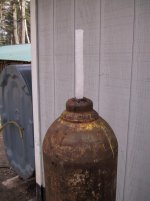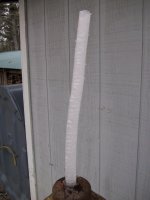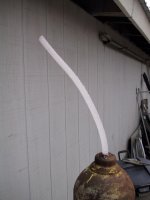Geez, i dunno... Steel is pretty strong but have you seen the frozen grenade demo?
Prof. is going on about thermal coefficients... does the ball and ring demo, talks a little more then pauses to do a another demo... fills a grenade sized and shaped casting with water, and screws a plug into the hole. Drops it in the bottom of a an empty milk carton, fills the carton with liquid Nitrogen and *quickly* puts the metal trash can over it, puts a brick on top, puts a jumbo heavy duty rubbermaid gabage can over that. Watches for a few seconds, shrugs... and goes back to the lecture. Minute or so later, ka-BOOM. Nitrogen "smoke" all over the floor, he lifts the Rubbermaid trash can and the metal can is tipped over, grenade is reduced to shrapnel, and milk carton is shredded. Class dismissed and half the freshman physics students head back to the dorm to change their shorts.
Wonder if he's still doing that demo? I'll never forget that water expands as it freezes and just about every other material contracts as they are cooled. The forces involved if you completely filled and froze a plugged gas bottle would be incredible. I wonder ...
 )
) )
)









